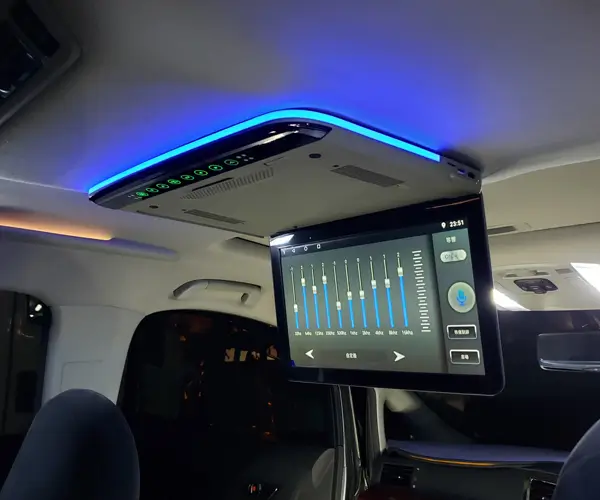Troubleshooting Your Arduino Servo Motor: A Friendly Guide to Fixing Common Issues
Ever found yourself ready to showcase that impressive robot arm or automated setup, only to discover your trusty Arduino servo motor isn’t cooperating? Frustrating, isn’t it? But don’t worry—most servo issues are more straightforward than they seem. With a bit of patience and some handy tips, you’ll be back in action in no time.

Understanding the Servo Motor Basics
Before diving into fixes, it’s helpful to understand what a servo motor does and how it functions within an Arduino project. A servo motor is a small device that can rotate to a specific position within a range, typically 0 to 180 degrees. It’s controlled via Pulse Width Modulation (PWM)—a series of signals sent from your Arduino board to tell the servo exactly where to point.
Servos are celebrated for their precision, speed, and ease of use, making them popular in robotics, RC vehicles, and interactive art projects. But because they’re electrical devices, they can sometimes act oddly, refuse to move, or behave unpredictably.
Common Symptoms of Servo Problems
If you’re facing issues with your servo motor, you’re likely experiencing one or more of these:
The servo isn’t moving at all. The servo jitters or vibrates without getting to the target position. The servo moves erratically or overshoots repeatedly. The servo moves but only partially. You hear a strange buzzing or clicking sound.
Each of these symptoms can stem from different causes—power issues, wiring errors, software glitches, or damaged hardware—all of which can be addressed with a systematic approach.
First Steps: Checking Your Power Supply
Often overlooked, power supply issues are among the leading causes of servo malfunction. Servos require a stable, adequate power source to operate smoothly.
Voltage: Make sure your servo’s voltage matches the specifications listed in its datasheet. Most standard servos run at 4.8V to 6V. Using a voltage that’s too high can damage the motor, while too low might cause sluggish movement. Current: Servos draw a lot of current, especially under load. If powered directly from your Arduino’s 5V pin, the servo might be starving for power, causing jittery behavior or complete failure. Solution: Use an external power supply dedicated to the servo—not the Arduino’s 5V pin. A 6V battery pack or a regulated power supply delivering sufficient current (check the datasheet for your servo’s stall current) is ideal.
Inspecting Connections: Wiring Matters
A common culprit for non-functional servos is faulty or loose wiring.
Three key wires: Signal (usually white or yellow), Power (red), and Ground (black or brown). Secure connections: Ensure all wires are firmly connected—sometimes a loose connection can mimic a dead servo. Polarity: Double-check that the red wire is connected to positive voltage, and black to ground. Breadboard pitfalls: If using a breadboard, verify that contacts aren’t loose or broken.
Testing Your Hardware: Is the Servo Still Good?
Before assuming the problem is software or wiring, test if your servo is working at all.
Use a simple test sketch: Upload a basic Arduino example such as “Servo Sweep” that runs the servo between 0 and 180 degrees. #include Servo myServo; void setup() { myServo.attach(9); // attach your servo to pin 9 } void loop() { for (int pos = 0; pos <= 180; pos += 1) { myServo.write(pos); delay(15); } for (int pos = 180; pos >= 0; pos -= 1) { myServo.write(pos); delay(15); } } Observe behavior: If the servo moves smoothly, hardware connections are probably fine. If it’s unresponsive or jittery, it suggests hardware issues.
Software Checks: Confirm Your Code
Sometimes the cause isn’t hardware but the software controlling it.
Pin assignment: Ensure your code specifies the correct pin that your servo is connected to. Library inclusion: Confirm you’ve included the Servo library correctly (#include ). Initial position: Make sure the servo isn’t commanded to an unreachable position or executed before it’s fully initialized. Serial debugging: Add serial print statements to verify your code runs as expected.
Other Common Issues to Consider
Servo Damage: If your servo has been subjected to mechanical strain or power surges, it might be permanently damaged. Overloading: Servos can stall if they’re holding a heavy load or are physically obstructed. Interference: Power supply noise or electromagnetic interference can cause erratic servo behavior.
This covers the initial groundwork—checking your hardware, wiring, power, and software. Next, we’ll dive deeper into advanced troubleshooting steps, pinpointing elusive issues, and tips to prevent future problems. Stay tuned for Part 2, where your servo motor woes will be a thing of the past!
Established in 2005, Kpower has been dedicated to a professional compact motion unit manufacturer, headquartered in Dongguan, Guangdong Province, China.




































